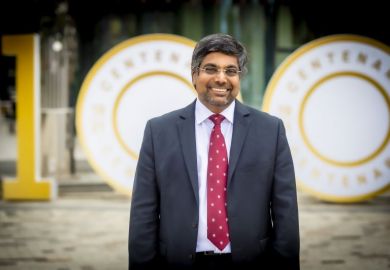Australian universities generally have small gender pay gaps compared with other employers, but large gender pay gaps compared with other tertiary education colleges, figures show.
Pay disparities also tend to be larger at regional universities and those that specialise in preparing students for occupations such as nursing and teaching than at rich metropolitan institutions and those oriented more towards STEM professions.
Newly released data from Australia’s Workplace Gender Equality Agency (WGEA) show that the typical male university employee earns 8.3 per cent more than his typical female counterpart. This is less than half the average disparity of 19 per cent across all enterprises, but more than double the tertiary education sector average of 4 per cent.
Gender pay gaps at just nine of 39 universities lie within the 5 per cent range deemed acceptable by the WGEA. Eleven universities have double-figure gaps, including seven non-metropolitan institutions.
Janin Bredehoeft, chief executive of Science in Australia Gender Equity (Sage), said small and regional universities faced “different conditions and challenges” from their large and metropolitan counterparts. “If you’re in a regional area, it’s harder to attract and retain staff. For example, it’s harder to get childcare,” she said.
“It’s likely that the large universities…have the advantage of being able to resource this work well. To really make a difference and improve your gender equity, [you need] commitment, resourcing and consistency over time.”
Carol Kulik, professor of human resources management at the University of South Australia, said regional organisations needed to offer generous packages to lure talent from magnets such as Sydney. This applied particularly to male staff, who were often key breadwinners in their families.
Professor Kulik said that rather than accepting pay gaps as “the economic reality”, regional universities needed to seek alternative strategies. “Maybe you need to partner with recruitment agencies who will think about attracting families as opposed to attracting individuals. You need to recognise the consequences of your actions and change what you can change.”
Campus resource collection: Gender equality in higher education: how to overcome key challenges
The pay gap represents the difference between the median total earnings of men and women at each institution. Central Queensland University (CQU), the only institution where the pay gap exceeded the average for all industries, said its 21.5 per cent figure reflected “family-friendly flexible working provisions” mostly embraced by women.
“Ninety per cent of our part-time workforce is female, which negatively skews our overall result,” said Barbara Miller, director of people and culture. “CQU is ranked 12th in the world…for gender equity and boasts a 75 per cent female senior management team. We…will continue to critically evaluate where we can improve.”
UNSW Sydney attributed its 1.4 per cent gender pay gap – the sector’s lowest – to “established equity strategies in recruitment and promotion, and active gender pay equity monitoring during remuneration reviews”.
“WGEA’s publication of this data is a very useful tool for all of us,” said vice-chancellor Attila Brungs. “While I’m proud of where we stand based on this data, we cannot be complacent.”
Sage said universities’ generally poor results compared with other tertiary institutions reflected private vocational colleges’ “patchy and inconsistent” data and reliance on casual staff, which occasionally produced “huge outliers” including massive pay gaps favouring women.
Professor Kulik said universities also had more “specialised roles” than smaller tertiary institutions, and tended to develop “more idiosyncratic deals” to “attract the right people”.
She said it was no surprise to see large pay gaps in institutions specialising in fields such as nursing, because these occupations also had large pay gaps – a consequence of the “glass escalators” phenomenon. “Even in industries that are very feminised, it’s still men at the top.”
The Australian Catholic University predicted that its “significant programme of work” would reduce its 14.5 per cent gender pay gap, the sector’s second largest. “Pay is close to parity for women and men at most levels,” said chief people officer Angelle Laurence. “However, for some senior staff positions which are contract-based, a higher gender pay gap is evident.”
Register to continue
Why register?
- Registration is free and only takes a moment
- Once registered, you can read 3 articles a month
- Sign up for our newsletter
Subscribe
Or subscribe for unlimited access to:
- Unlimited access to news, views, insights & reviews
- Digital editions
- Digital access to THE’s university and college rankings analysis
Already registered or a current subscriber?












